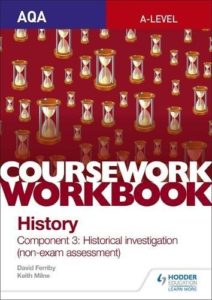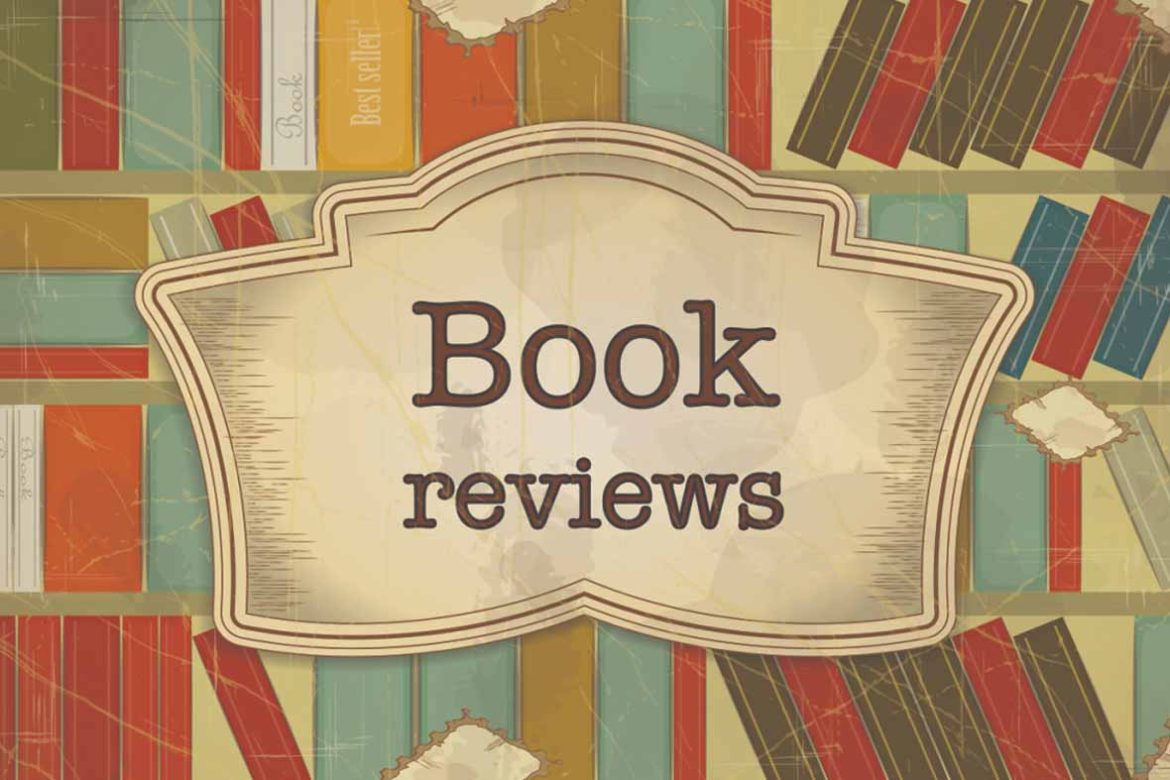Title: AQA A-level History Coursework Workbook: Component 3 Historical investigation (non-exam assessment) (AQA A Level History Workbook) Keith Milne. ISBN-10: 1510423524, April 2018.
![]()
We applaud Hodder for being the first to publish a student coursework book. The fact that this has been written by such an authority on the AQA coursework should be welcomed. Most centres are likely to set students work over the summer holidays so there is at least something committed to paper for when they return. This workbook reduces some of the time spent on  preparation and we salute that. Most teachers will also appreciate the guidance that is given at the start of the book about workable questions, mark schemes and word limits for example. This is especially the case if they did not manage to get to the feedback training sessions last September. The advice underscores for instance, the importance of the students covering the full period identified in their question. For many, this was a major obstacle to higher marks last year. I was thankful that in the midst of the advice, that no dates for coursework submission were suggested because that would end years of benevolent lying to help my students hit their deadlines. Some of the initial advice to students about choosing topic areas and questions might be a little redundant for most centres.
preparation and we salute that. Most teachers will also appreciate the guidance that is given at the start of the book about workable questions, mark schemes and word limits for example. This is especially the case if they did not manage to get to the feedback training sessions last September. The advice underscores for instance, the importance of the students covering the full period identified in their question. For many, this was a major obstacle to higher marks last year. I was thankful that in the midst of the advice, that no dates for coursework submission were suggested because that would end years of benevolent lying to help my students hit their deadlines. Some of the initial advice to students about choosing topic areas and questions might be a little redundant for most centres.
The book is 88 pages long, which is perhaps a little on the lengthy side for a workbook, but it comes packed with activities for the students to complete. We especially liked the activities that involved summarising the interpretations, rating sample responses and the inclusion of an evaluative word box was helpful. We also thought the self-assessment against learning objectives grid was especially good and that most students would find this beneficial. As useful as the activities are, many of my students would be reluctant to write in a book and would prefer a printable version; perhaps something for the publisher to consider in future editions. There is also a detailed mark scheme which breaks down and explains the terms in accessible language, although our team felt that more could have been said about the meaning of ‘value’ and what is meant by analysis. Student would probably benefit from examples of analysis or narration at this point. We also felt that the mark scheme would be better placed with the sections on writing towards the end of the book and in an easily identifiable place to flick back to. The workbook successfully demonstrates effective evaluation of source content and offers some advice on evaluating the provenance of secondary sources. However, it suggests that one of the sources is limited because it was published for the mass market which seems a bit of a stock phrase they so often warn us against. However, there are better examples of source evaluation elsewhere. We suspect that centres and their students will still be unhappy about having to find something to say about the background of predominantly middle class white men, but we should save that for a another blog.
Overall, for an RRP of £6, the coursework workbook packs a lot of really helpful advice and activities for students. It certainly does not mean that teachers can put their feet up however, many students will still struggle finding their way about a library or knowing how to find appropriate sources. The true test of the workbook will be whether the students value it enough to put their hands in their own pockets (or their parents) to buy it. The students will still probably turn to us for advice on that one.
You can order an inspection or buy the book from the Hodder website and Amazon. The ‘Answers’ for the book are available here.


